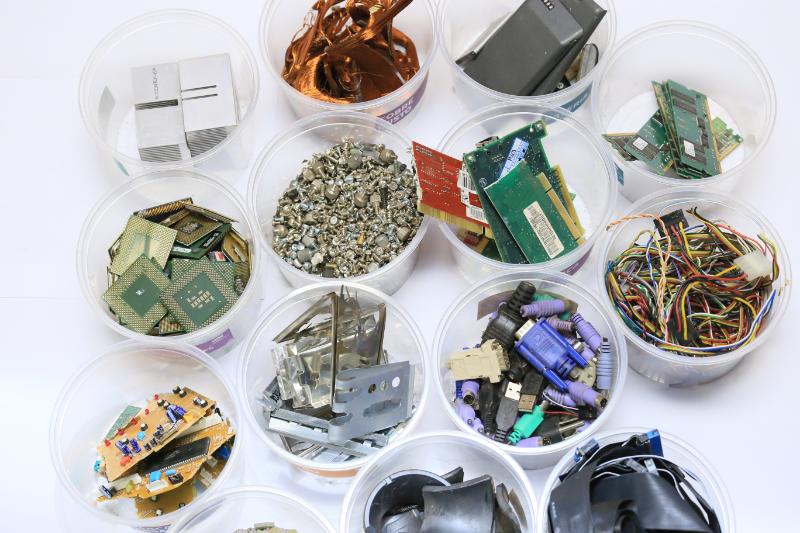
According to Statista, a 2020 survey of Australian consumers who own connected devices found that “58 per cent of respondents owned or had access to a smart TV.” The report further highlighted that “the average Australian household has around 20 internet-connected devices”, with the number expected to more than double by 2024, driven by the increasingly widespread adoption of IoT technology.
That’s a lot of devices, and we’re just talking about smart gadgets. What about all the other electronic and electrical appliances and devices we use on a daily basis?
The digital age has transformed the way we live, work, play, and do virtually everything. It’s hard to imagine getting through the day without our electronic gizmos. But are we disposing of our e-waste responsibly?
What is E-waste?
Simply put, electronic waste or e-waste refers to discarded products with a battery or plug—essentially anything electronic, electrical, or battery-powered. Common examples of e-waste include mobile phones, tablets, computers, smartwatches, fitness trackers, TVs, kitchen appliances, etc.
Why Do We Need to Recycle E-waste?
A recent report by the United Nations University highlights that e-waste amounts have grown from 20 million to 50 million tonnes per year since 2000. The report forecasts that the number will more than double by 2050 to reach a staggering 111 million tonnes per year.
Meanwhile, the UN’s Global E-waste Monitor 2020 highlights that “only 17.4 per cent of 2019’s e-waste was collected and recycled”, attributing the escalating growth of e-waste to short product life cycles, limited repair options, and higher consumption rates.
The report found that high-value materials such as gold, silver, copper, and platinum, conservatively valued at US$57 billion (a figure exceeding the GDP of most countries), ended up mostly in landfills or incinerated instead of being reused for future production.
Recycling not only prevents hazardous chemicals from polluting our eco-systems, but it also makes business sense. Why spend more time and money digging up precious natural resources when they can be extracted from discarded devices and reused?
Clean Up Australia, a non-profit environmental conservation organisation, highlights the following facts about the growing e-waste problem in Australia:
- 4 million computers and 3 million TVs are purchased in Australia every year, 88% of which will make their way to landfills, contributing to the 140,000+ tonnes of electronic waste generated by Australians annually
- On average, less than 1% of TVs and 10% of computers are recycled in Australia
- 98% of the components in a computer or television are fully recyclable
- 70% of toxic chemicals such as lead, cadmium, and mercury in landfill come from e-waste
- Electronic rubbish is growing three times as fast as any other waste stream
It’s a huge problem that’s growing by the day, but we can all pitch in and do our part. All we need to do is to recycle our e-waste rather than dumping them in the bin.
Benefits of Recycling E-Waste
The top 5 benefits of recycling e-waste include the following:
- Reduces Landfill Sites
The more we recycle, the less waste we generate, which applies to all kinds of waste. Reduced landfill sites allow for more land to be utilised for more meaningful purposes such as agriculture and housing development. - Preserves Natural Resources
As highlighted earlier, recycling e-waste enables valuable materials to be recovered and reused to manufacture new products, which saves energy, reduces our carbon footprint, and preserves Earth’s finite natural resources. - Prevents Toxic Chemicals from Polluting the Ecosystem
Electronic components contain a number of toxic chemical substances such as nickel, cadmium, lithium, mercury, and lead, which pose health and environmental hazards.Buried in landfills, these toxic chemicals leach into our soil, waterways, and ecosystem, contaminating agriculture, livestock, and sea life, ultimately ending up in our food and causing long-term damage to our health and the environment. - Creates New Business & Employment Opportunities
The current challenges in e-waste collection and recycling present an immense opportunity for innovative research & development and creative business models for sustainable solutions.A prime example is the world’s first e-waste microfactory by UNSW’s Professor Veena Sahajwalla. Designed as a modular system that can be installed in a space as small as 50 square metres, the microfactory crushes the e-waste, with a robot removing its useful components to be reheated in a small furnace.
Its innovative and portable design makes it easy and cheap to transport to the waste site, making e-waste recycling much more cost-effective and accessible. - Promotes Mindful Consumerism
Making e-waste recycling a regular practice is a useful reminder of the impact our consumer decisions and behaviour have on our environment. Rather than contributing to the wasteful and irresponsible throw-away culture, it’s time for us to embrace mindful consumerism by thinking before buying and repairing/recycling before discarding.
Not sure how to recycle your electronic waste?
A Tech Recyclers has been providing professional e-waste recycling services since 2016. We accept e-waste from any business or workplace including schools, universities, TAFE, hospitals, and clubs. We can collect your e-waste from your premises free of charge, providing sufficient quantity and re-useability.
Contact A-Tech Recyclers to request a free collection today!
